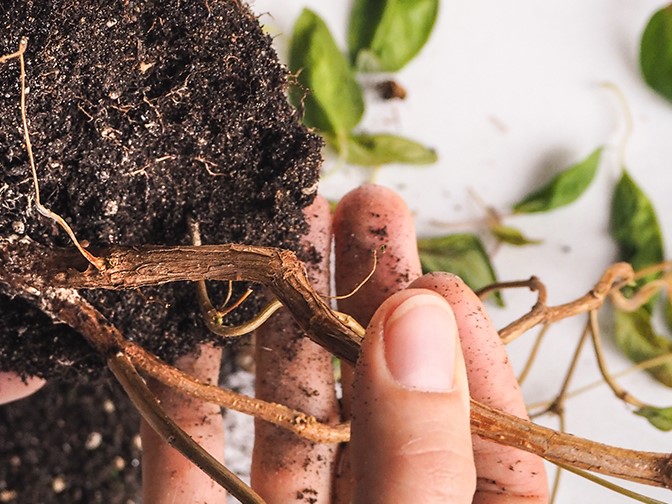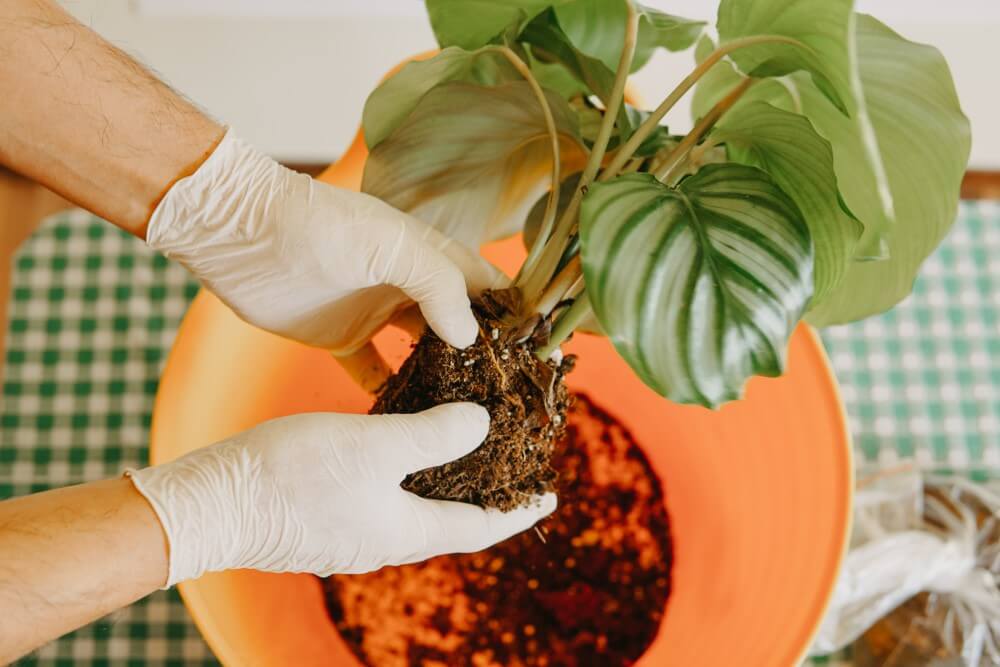Rattlesnake plants, also known as Calathea lancifolia, are popular houseplants known for their unique and striking foliage. However, like any other plant, they can be susceptible to various problems, one of which is root rot. Root rot occurs when the roots of a plant become infected by fungi or bacteria, leading to their decay. In this essay, we will explore the causes, symptoms, and effective strategies for dealing with root rot in rattlesnake plants.
What is Root Rot

Root rot is a common plant disease caused by the presence of pathogens in the soil. It occurs when the roots of a plant become infected by fungi or bacteria, leading to their decay. The most common cause of root rot is overwatering and poor drainage, which creates an excessively moist environment around the roots. When the soil becomes waterlogged for an extended period, it deprives the roots of oxygen, impairs their functionality, and provides a perfect breeding ground for pathogens. As a result, the roots start to rot and become mushy, compromising the plant’s ability to absorb water and nutrients.
Identifying root rot can be challenging, as the symptoms often resemble those of other common plant problems. However, there are several key signs to look out for, such as yellowing or wilting leaves, root discoloration, foul odor, and stunted growth. Detecting these symptoms early on is crucial for effectively addressing root rot and saving the affected plant.
What Causes Root Rot
Root rot is primarily caused by several factors, the main one being overwatering and poor drainage. When plants receive more water than they can absorb or the soil does not have proper drainage, excess moisture accumulates around the roots. This creates a favorable environment for pathogens like fungi and bacteria to thrive. These pathogens attack the roots, leading to their decay and the onset of root rot.
Another contributing factor to root rot is the use of heavy or compacted soil. Soil that is heavy in clay or has poor aeration can hold onto excess moisture, further increasing the risk of root rot. In such conditions, the roots may struggle to extract oxygen, leading to their weakening and vulnerability to pathogens.
Additionally, certain environmental conditions can exacerbate the likelihood of root rot. High humidity levels, especially in combination with poor airflow, can create a damp and stagnant environment that encourages the growth of pathogens. Overcrowding of plants, especially in containers, can also contribute to the development and spread of root rot as it leads to increased competition for resources and poor air circulation.
By understanding the causes of root rot, such as overwatering, poor drainage, heavy soil, high humidity, and overcrowding, plant enthusiasts can take preventative measures to minimize the risk and ensure the health and longevity of their plants.
How to Identify Root Rot

Detecting root rot in rattlesnake plants can be challenging, as the symptoms often resemble those of other common plant problems. However, there are several key signs to look out for:
- Yellowing or Wilting Leaves: One of the first visible symptoms is the yellowing and wilting of leaves. The leaves may lose their vibrant color and appear droopy or limp.
- Root Discoloration: When examining the roots, you may notice a dark brown or black coloration. Healthy roots should be light and firm, so any softness or darkening indicates rot.
- Foul Odor: Another indication of root rot is a foul smell emanating from the soil. This odor is often described as musty or moldy.
- Stunted Growth: Affected plants may show signs of stunted growth or a lack of new leaf development. The overall vitality of the plant diminishes, and it may become weak and susceptible to other pests and diseases.
How to Deal with Root Rot

Once root rot has been identified in rattlesnake plants, prompt action is crucial to prevent further damage and save the plant. Here are several effective strategies for dealing with root rot:
- Adjust Watering Practices
Overwatering is the primary cause of root rot, so it’s essential to adjust your watering practices. Allow the soil to dry out partially between waterings. Before watering, check the moisture level by inserting your finger into the soil about an inch. If it feels dry at that depth, it’s an indication to water. Additionally, ensure that the pot has proper drainage holes to prevent water from accumulating in the soil.
- Repotting in Well-Draining Soil
If the root rot is severe, it may be necessary to repot the rattlesnake plant into fresh, well-draining soil. Remove the plant from its current pot, gently rinse the roots to remove any infected soil, and trim away any rotten or mushy roots. Choose a pot with drainage holes and use a high-quality potting mix specifically formulated for indoor plants. The new soil will provide better drainage and reduce the likelihood of excessive moisture around the roots.
- Correcting Humidity and Temperature
Rattlesnake plants thrive in high humidity, but excessively moist conditions can contribute to root rot. Ensure that the plant is not placed in an area with excessive moisture or a lack of airflow. Provide adequate ventilation and maintain a humidity level of around 50% to 60% to create a healthy environment for the plant. Additionally, avoid exposing the plant to extreme temperature fluctuations, as this can weaken its overall resilience.
- Fungicide Treatment
In more severe cases of root rot, a fungicide treatment may be necessary. Fungicides specifically formulated for root rot can help control the spread of the pathogens and promote the plant’s recovery. Follow the instructions provided by the manufacturer and apply the fungicide as directed. Remember to wear protective gloves and ensure good ventilation during the application process.
- Monitoring and Prevention
After addressing the root rot issue, it’s essential to monitor the plant closely for any signs of recurrence. Regularly inspect the roots, leaves, and soil for any changes or symptoms. Implementing preventive measures such as proper watering practices, good drainage, and maintaining optimal humidity levels will help prevent future occurrences of root rot.
Conclusion
Root rot can be a devastating problem for rattlesnake plants, but it can be managed effectively with prompt action and proper care. By understanding the causes and symptoms of root rot, adjusting watering practices, repotting in well-draining soil, correcting humidity and temperature, applying fungicide treatments if necessary, and monitoring the plant closely, you can successfully deal with root rot and ensure the continued health and vitality of your rattlesnake plants. Remember, prevention is key, so maintaining a balanced and suitable environment for your plants will significantly reduce the risk of root rot and other common plant problems.


